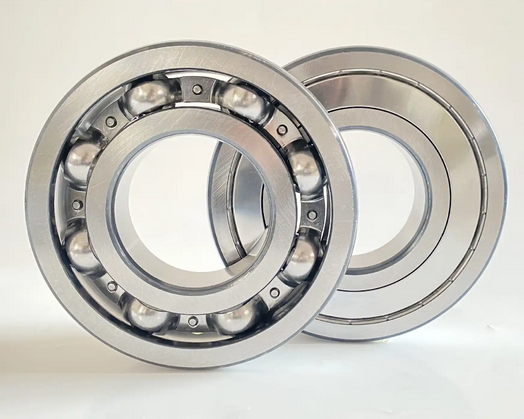Bearing materials for sewage pumps
The bearing materials of sewage pumps are mainly divided into two categories: metal materials and non-metallic materials. The following is a detailed introduction to these two types of materials:
1. Metal materials
Bearing alloy (Babbitt alloy)
Composition: The main alloy components are tin, lead, antimony, and copper, among which antimony and copper are used to improve the strength and hardness of the alloy.
Classification: According to the standard, Babbitt alloy can be divided into tin-based alloy and lead-based alloy. The strength and hardness of tin-based alloy are higher than those of lead-based alloy, and the corrosion resistance is also better.
Grade: Common grades of tin-based alloys are ZSnSb11Cu6, ZSnSb8Cu4, etc.; Common grades of lead-based alloys are ZPbSb16Sn16Cu2, etc.
Applicable scenarios: The melting point of bearing alloy elements is low, suitable for use in working conditions below 150°C.
Wear-resistant cast iron
Features: Excellent wear resistance, suitable for bearing materials under some specific working conditions.
Copper-based alloy
Advantages: It has high thermal conductivity and better wear resistance than steel. At the same time, copper-based alloys have good machinability and lubricity, and the inner wall can be finely machined to contact the smooth surface of the shaft.
Applicable scenarios: Copper-based alloys have high strength, good thermal conductivity and wear resistance, and the allowable operating temperature is higher than that of Babbitt alloy. However, the compliance, embedding and friction compatibility are not as good as those of Babbitt alloy. Commonly used tin- and phosphorus-containing tin bronzes are suitable for medium-speed heavy-load or impact-loaded bearings; tin-, zinc- and lead-containing tin bronzes are suitable for medium-speed medium-loaded bearings.
Carbon steel and stainless steel
Features: Carbon steel materials are usually 45# or 40Cr, which have the characteristics of high strength and wear resistance; stainless steel shaft materials are commonly used 304, 316, 316L, etc., which have the characteristics of corrosion resistance, toughness and wear resistance.
Applicable scenarios: Carbon steel shafts are alternatives to cast iron shafts, and perform better under conditions of higher pressure and flow; stainless steel shafts are suitable for occasions that require corrosion resistance.

2. Non-metallic materials
Graphite
Features: Graphite is a good self-lubricating material that is easy to process and becomes smoother with grinding. But its mechanical properties are poor, and its impact resistance and load bearing capacity are poor.
Improvement method: In order to improve its mechanical properties, fusible metals with good wear resistance are often used for impregnation. For example, the allowable operating temperature of babbitt alloy graphite bearings is 120~180℃, the allowable temperature of copper alloy graphite bearings is 300℃, and the allowable operating temperature of antimony alloy graphite bearings can reach 500℃.
Rubber
Features: Rubber bearings have been used in large horizontal axial flow pumps, but the durability may vary depending on the working conditions.
Applicable scenarios: Generally used for water-guided bearings of small and medium-sized vertical pumps.
Polyurethane
Features: It is an improved material of rubber with better wear resistance and durability.
P23 phenolic plastic
Application case: It was first used in the horizontal axial flow pump with D=3 meters in Xi'an Pump Station, Doumen, Guangdong.
F102 composite material
Features: A high-performance composite material that may have the characteristics of wear resistance and corrosion resistance.
Sailong
Features: A new type of non-metallic material that may have excellent wear resistance and self-lubricating properties.
Ceramic
Features: Long service life, often used to transport high-concentration acid and alkali media, but the price is relatively high.
Metal plastic
Features: Combines the advantages of metal and plastic, may have better wear resistance and mechanical strength.




